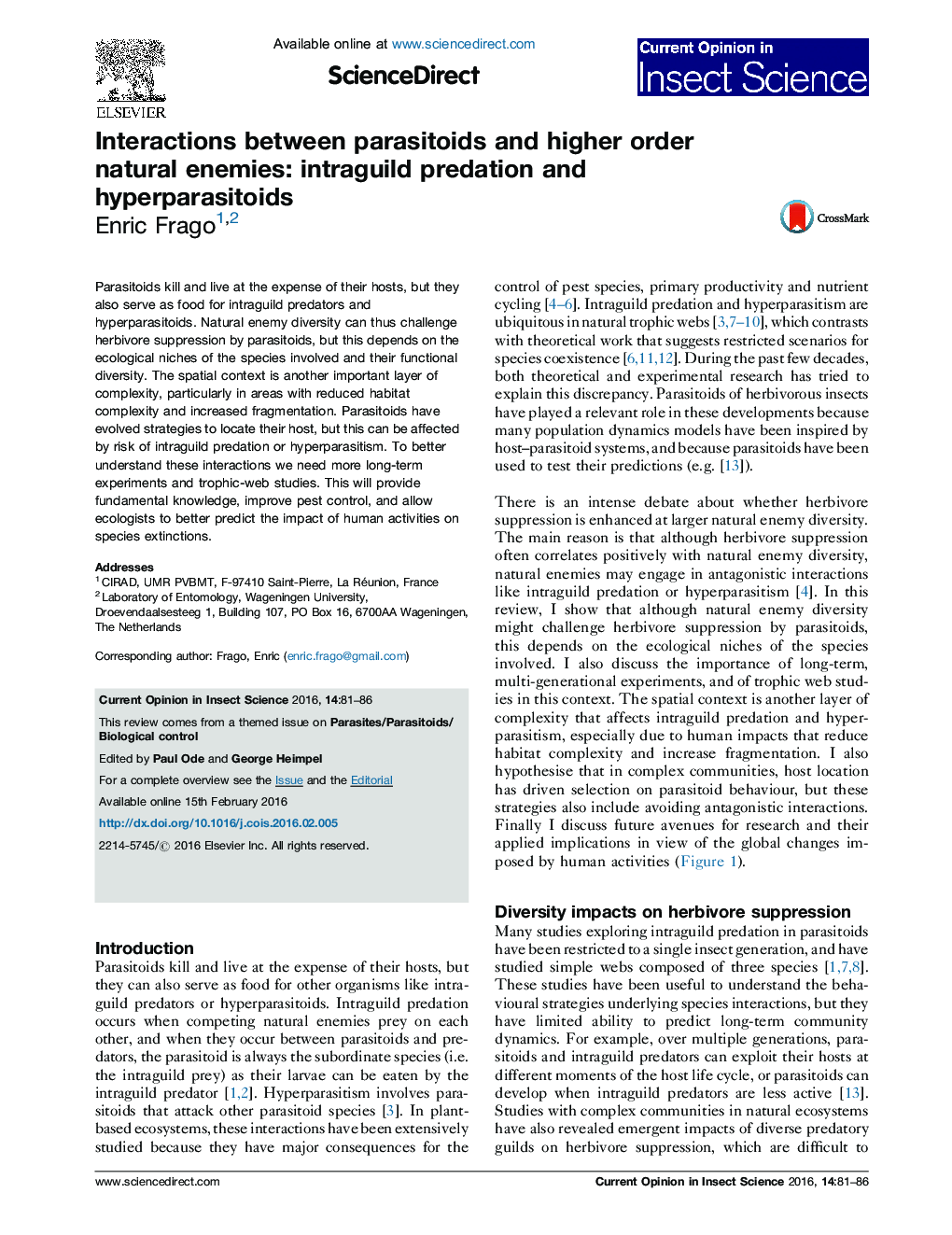| Article ID | Journal | Published Year | Pages | File Type |
|---|---|---|---|---|
| 4508183 | Current Opinion in Insect Science | 2016 | 6 Pages |
•Intraguild predation and hyperparasitism do not always reduce herbivore suppression.•Trophic-web and long-term studies are needed to understand stability conditions.•Spatial complexity, at both the plant and the landscape level, needs to be considered.•Parasitoid behaviour to avoid risk has consequences for insect communities.•Plant defences mediate complex interactions among natural enemies.
Parasitoids kill and live at the expense of their hosts, but they also serve as food for intraguild predators and hyperparasitoids. Natural enemy diversity can thus challenge herbivore suppression by parasitoids, but this depends on the ecological niches of the species involved and their functional diversity. The spatial context is another important layer of complexity, particularly in areas with reduced habitat complexity and increased fragmentation. Parasitoids have evolved strategies to locate their host, but this can be affected by risk of intraguild predation or hyperparasitism. To better understand these interactions we need more long-term experiments and trophic-web studies. This will provide fundamental knowledge, improve pest control, and allow ecologists to better predict the impact of human activities on species extinctions.
